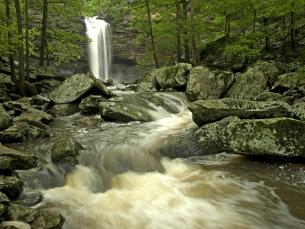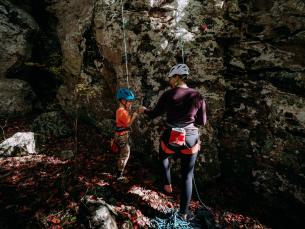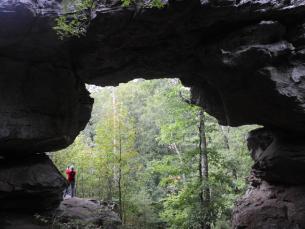Petit Jean State Park’s Archeological Treasures
By: Arkansas State Parks StaffMost visitors to Petit Jean State Park in the Arkansas River Valley remember it as a place of majestic scenery, beautiful trails, and hospitable, friendly people at the park’s visitor center or historic Mather Lodge. But those interested in the distant past will also remember fascinating geology, as well as rare rock art found in the park’s primary archeological site: the Rock House Cave. Petit Jean State Park holds a treasure trove of archeological significance.
By 900 AD, Native Americans across the southeast began to settle along main waterways, including the great Mississippi River as well the Arkansas River to the west. This time period is known as the Mississippian Era. A new way of life developed based on the agricultural production of beans and squash, as well as corn imported from long-distance trade with people from the south. Fortified towns arose, and platform mounds were used for ceremonial purposes. Societies developed that were highly organized, and there were powerful leaders among provinces.
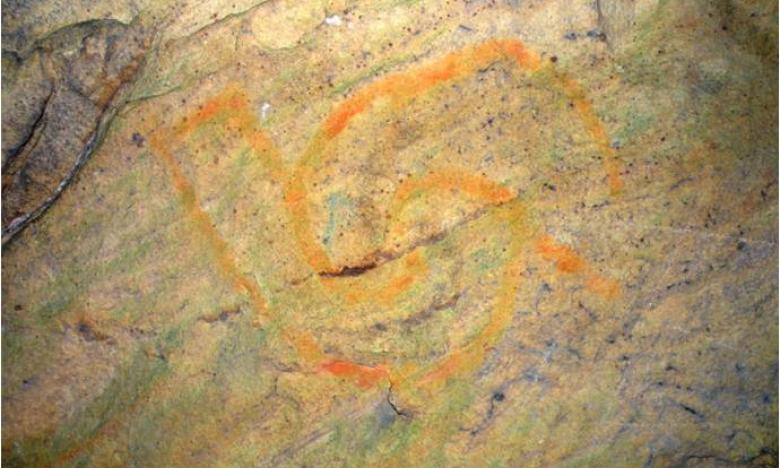
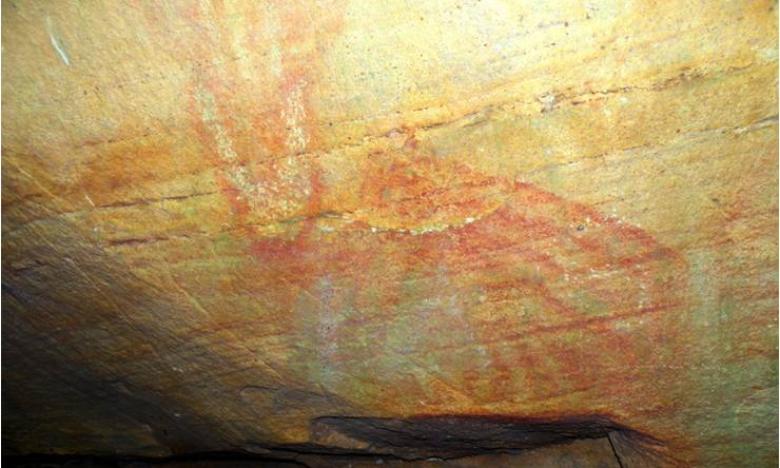
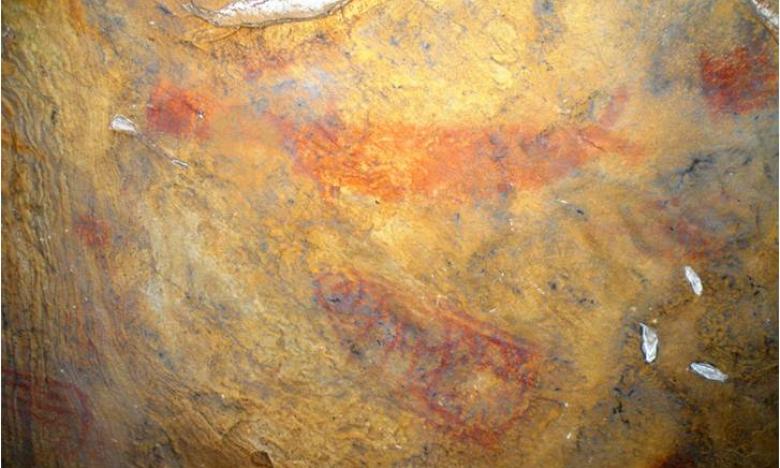
In the Rock House Cave today, interested people may find the likeness of a paddlefish, next to a fish trap made of woven wood, or an often-used symbol which also appeared on Tanico pottery but whose meaning has been lost, or the likeness of a woodland bison, or a symbol of an important person in headdress, or a strange snake-like, or river-like, curved image next to a footprint. The visitor’s guess may be as good as the local archeologist’s.
Those who come to Petit Jean State Park are invited to see this authentic Native American rock art first hand. But please treat it with care. Graffiti and wear-and-tear from heavy park visitation takes its toll. The Rock House Cave is one of the few places where anyone, with no special permission required, may discover such precious windows to the past on any day of the week, from 8:00 AM until dusk. Come and see them for yourself.
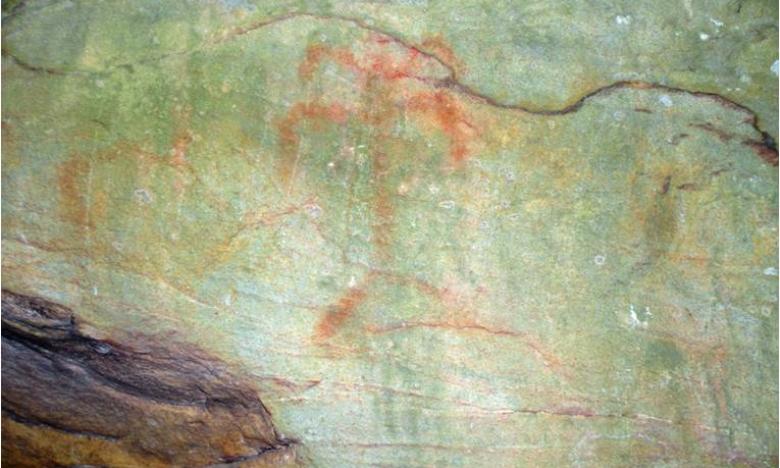
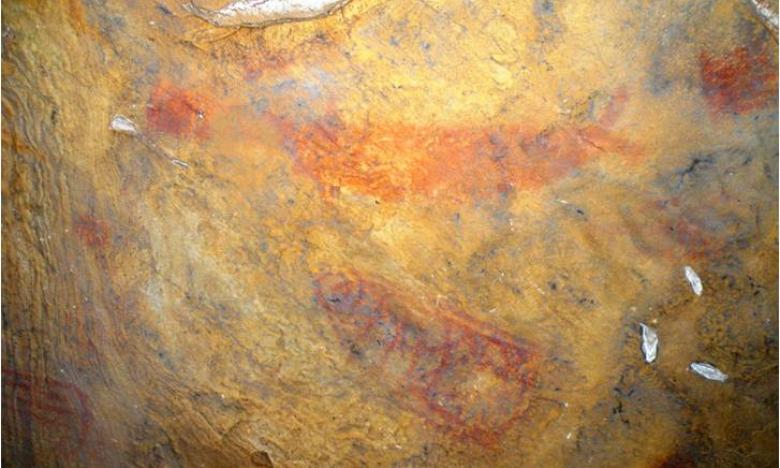
One such province was called Cayas, and it was located near Petit Jean Mountain. The Arkansas River, which flows just north of Petit Jean Mountain, was then called the River of Cayas. The people of the scattered settlement of Tanico, in the province of Cayas just west of Petit Jean Mountain, made beautiful pottery, gathered crops, made excursions to find wild game, and to gather salt – a highly-valued element necessary to the survival of the people. Salt was also traded for other goods when enough could be gleaned by boiling it from brackish ponds. It is highly probable that rock art found today in Petit Jean State Park was created by the culture that inhabited Tanico.
During tours to the Rock House Cave, visitors often ask if Indians once lived on the mountain. The answer is yes, especially in earlier eras dating back to the Paleoindiantime, around 10,000 years ago. By the time of Mississippian culture, though, what we know today as Rock House Cave, above Cedar Creek’s lower canyon, was only inhabited during special rites of passage or sacred ceremonies. In fact, the Petit Jean Mountain plateau was possibly considered a sacred area – a great temple mound above the River of Cayas.
The meaning of the rock art that remains today is still mysterious in many regards. Some figures clearly represent animals – zoomorphic. Others are in the likeness of people – anthropomorphic. Painted images are called pictographs. Etched or carved images are called petroglyphs. Long-lasting paint was probably made by adding ground-up mineral pigments of hematite, magnetite, or possibly charcoal to a sticky substance such as blood, animal fat or even egg white.
